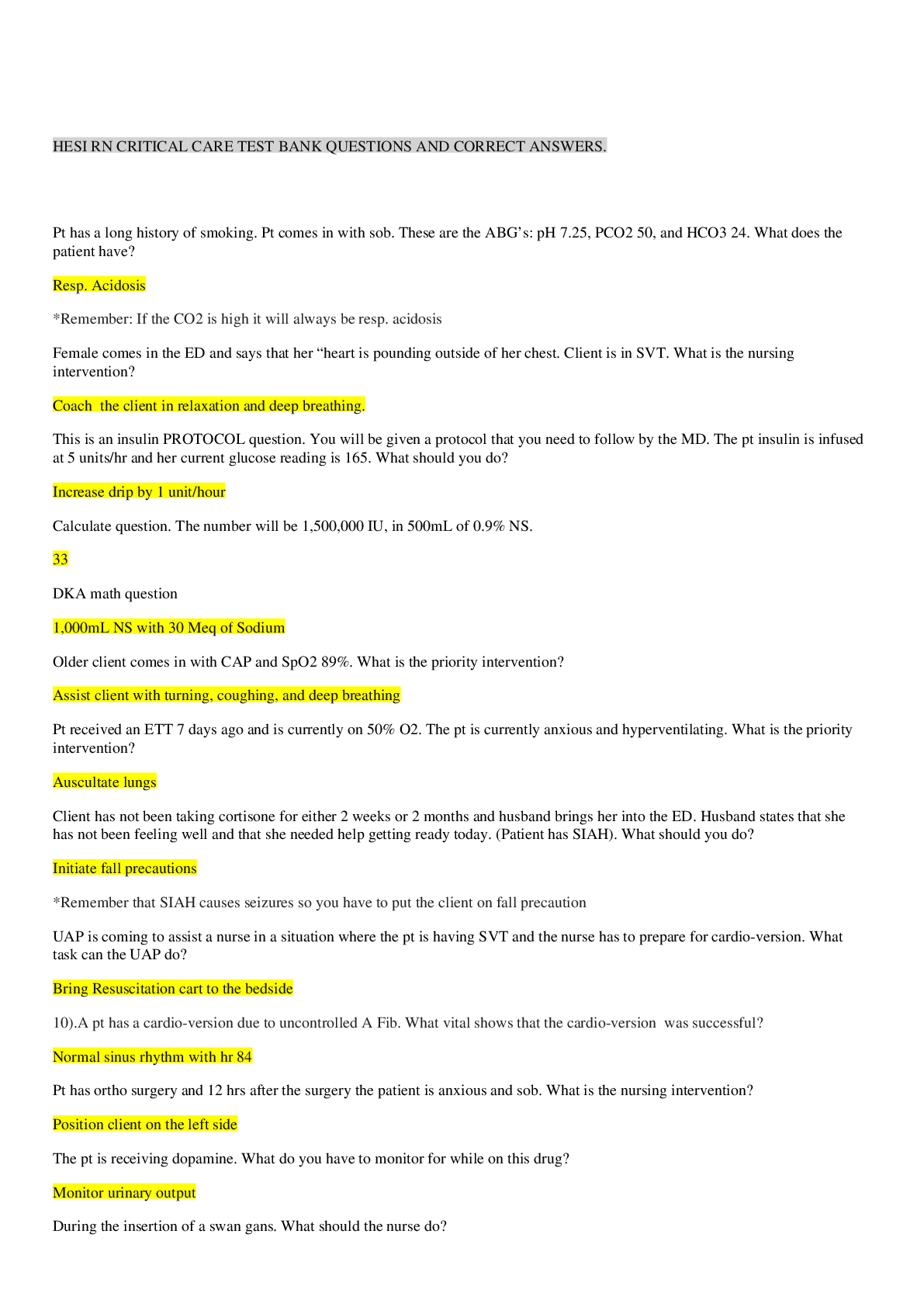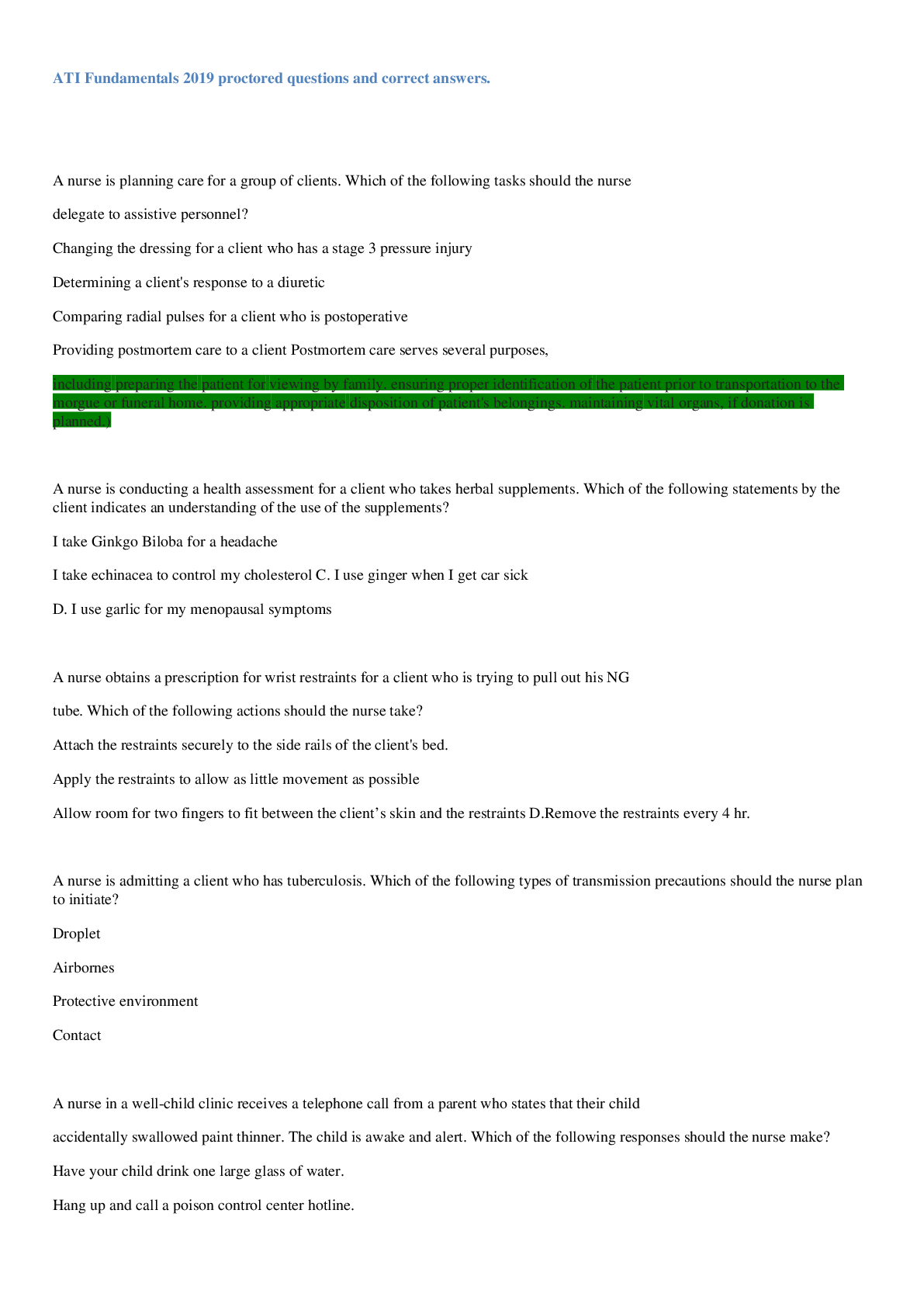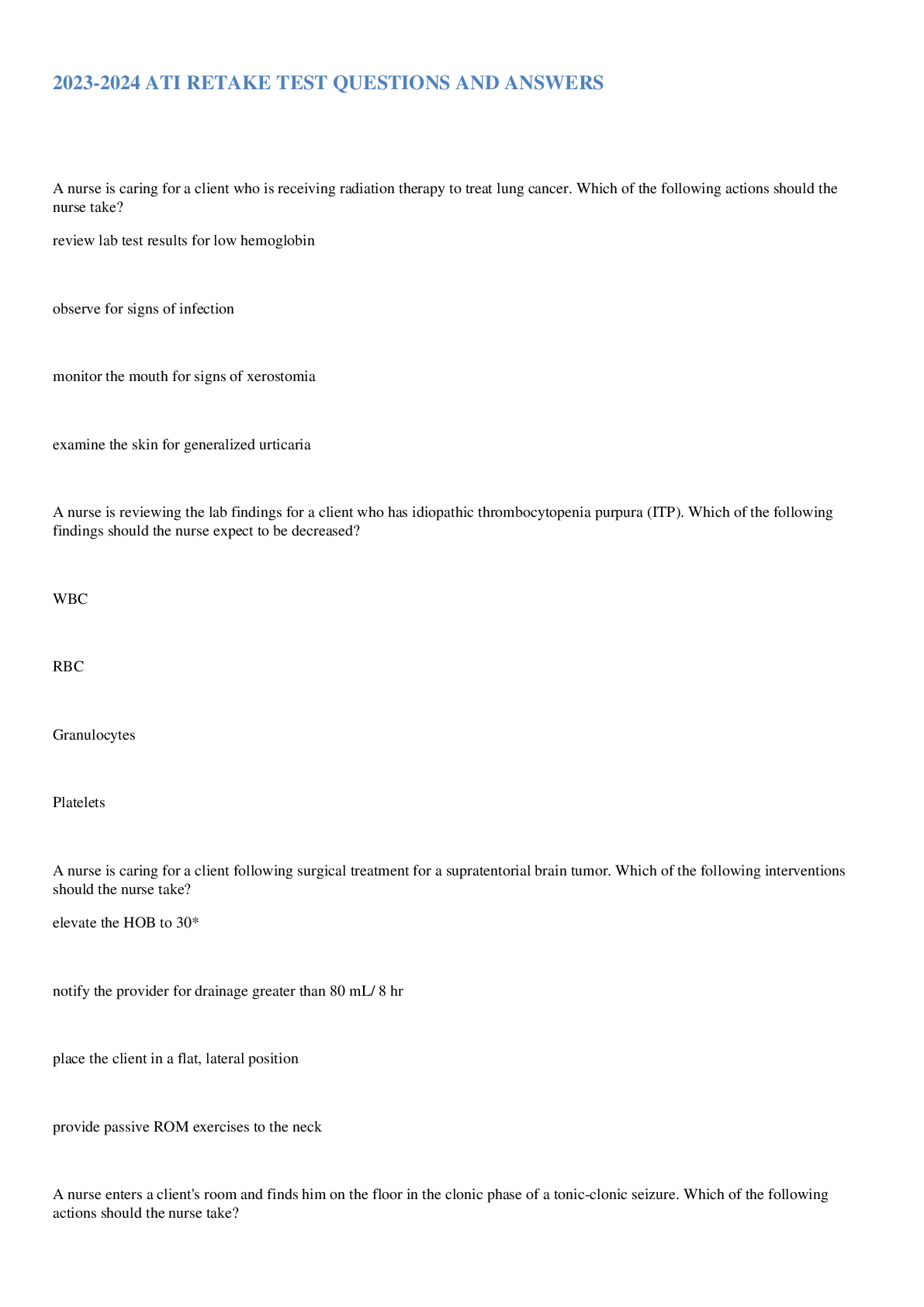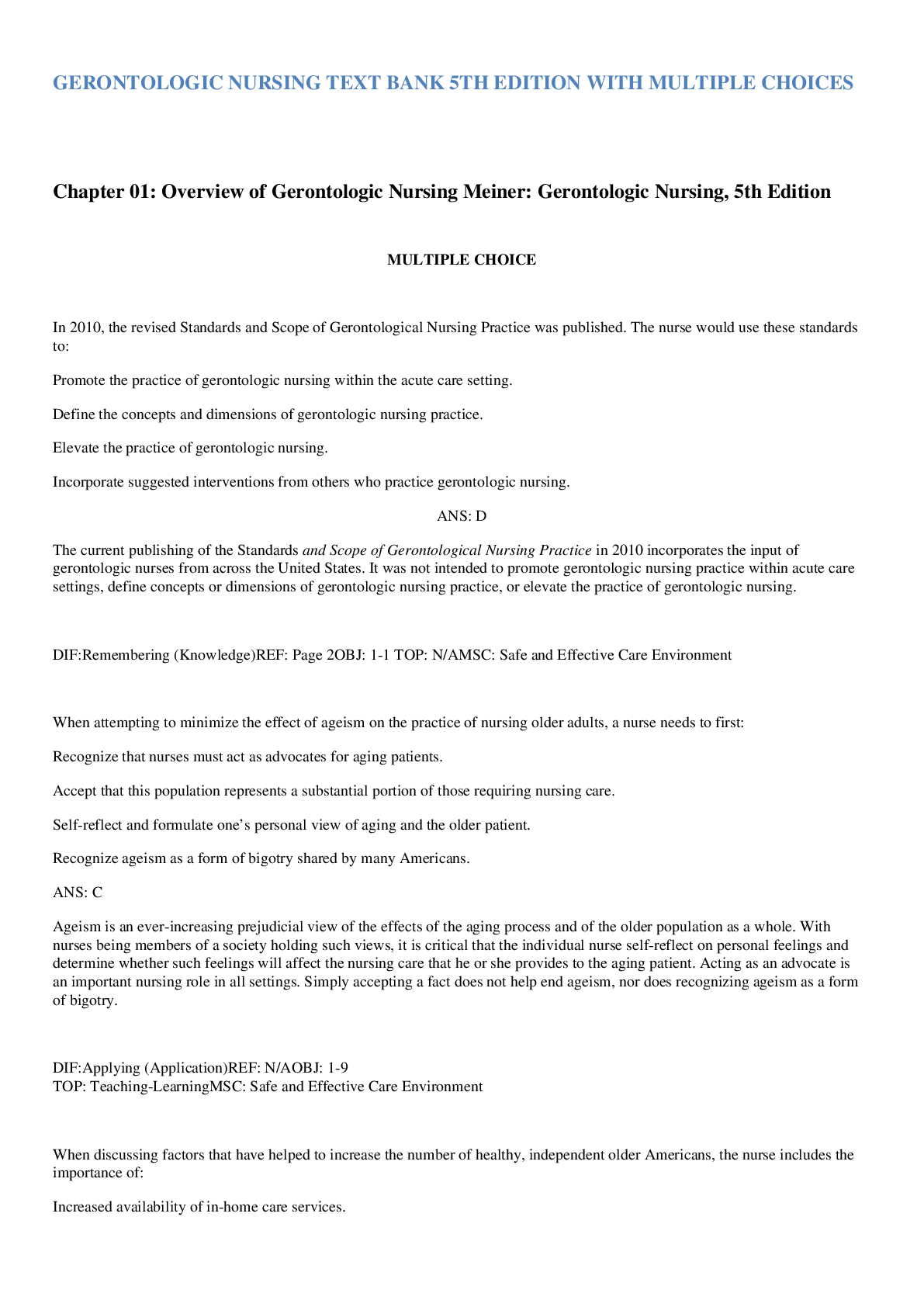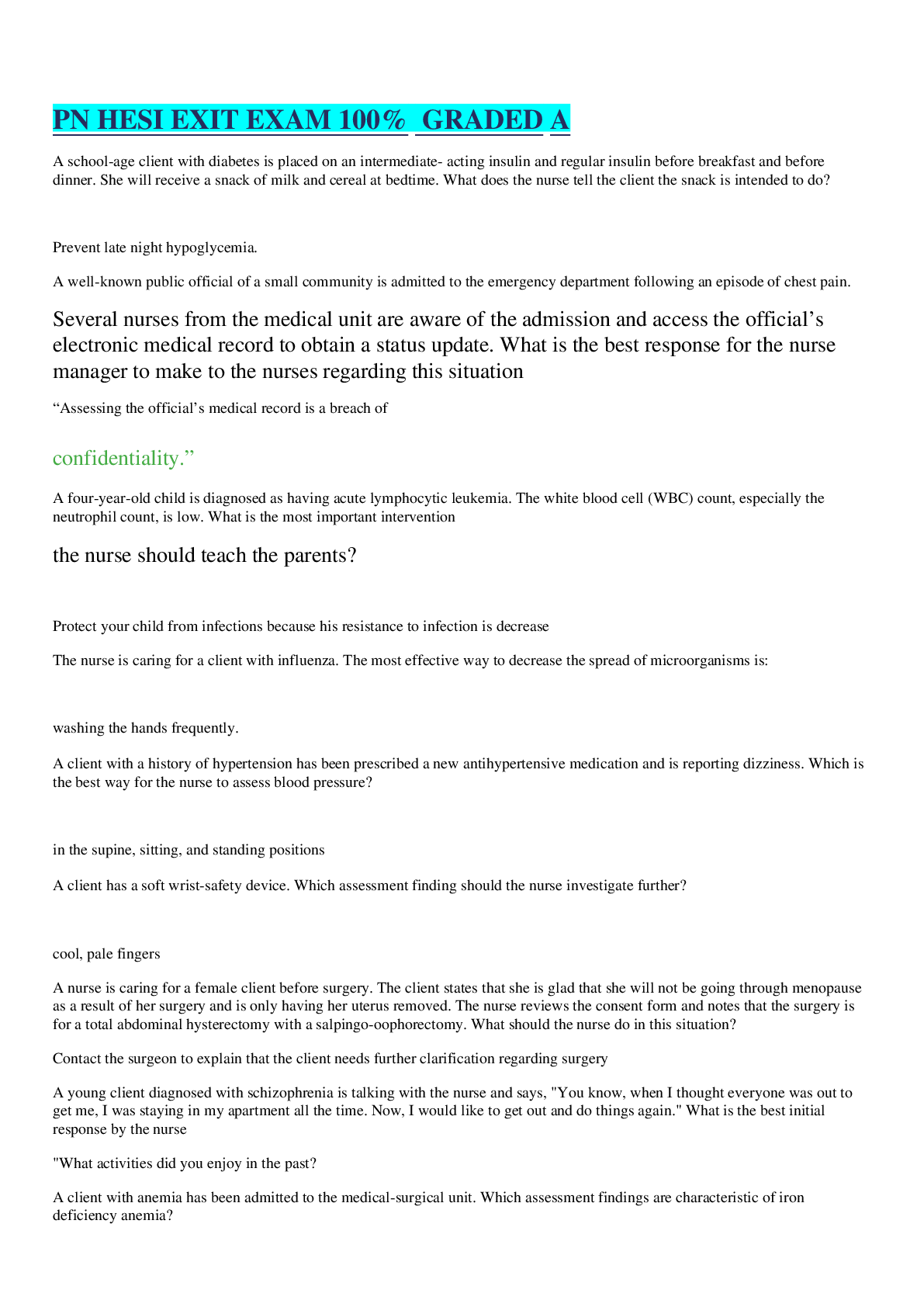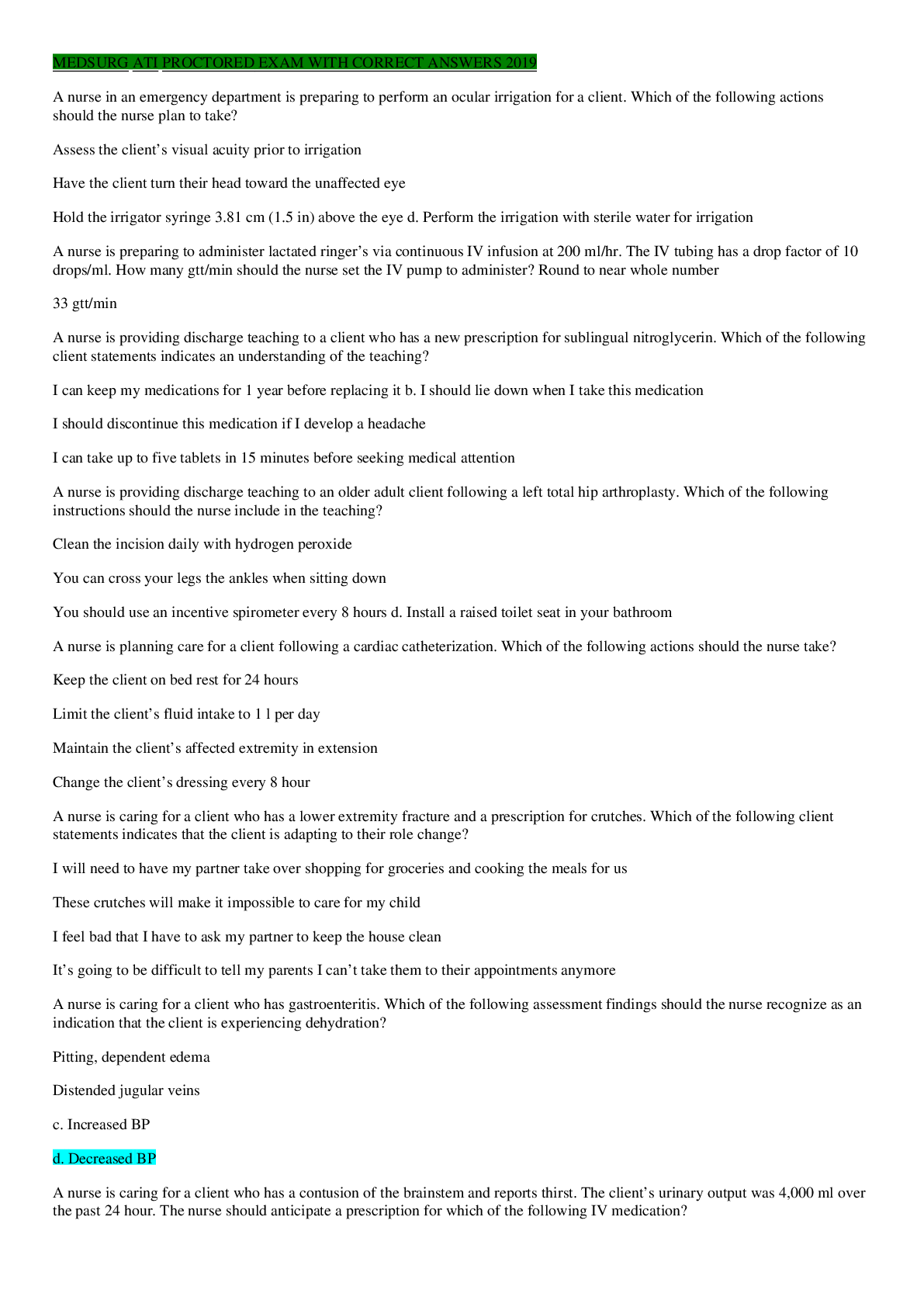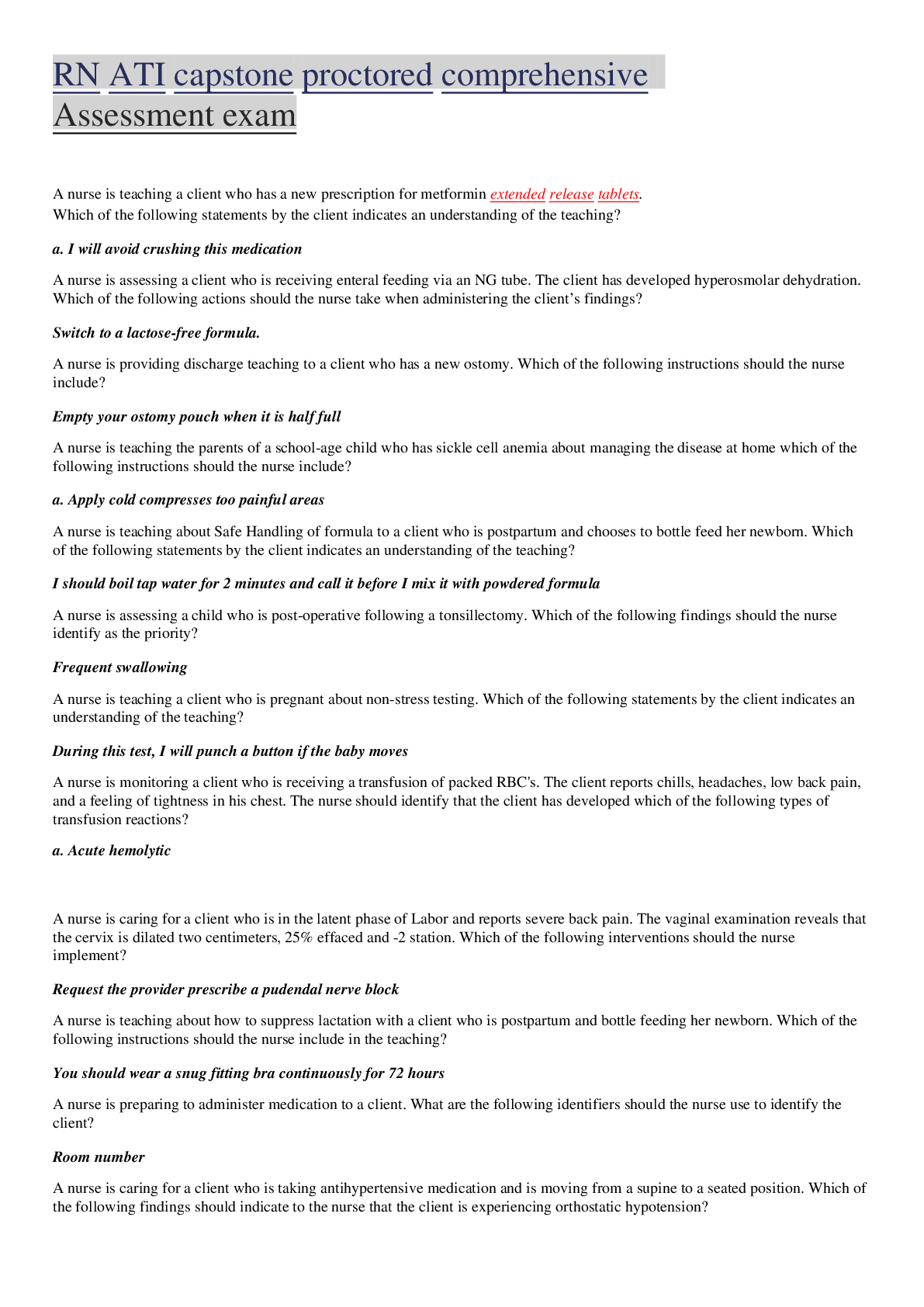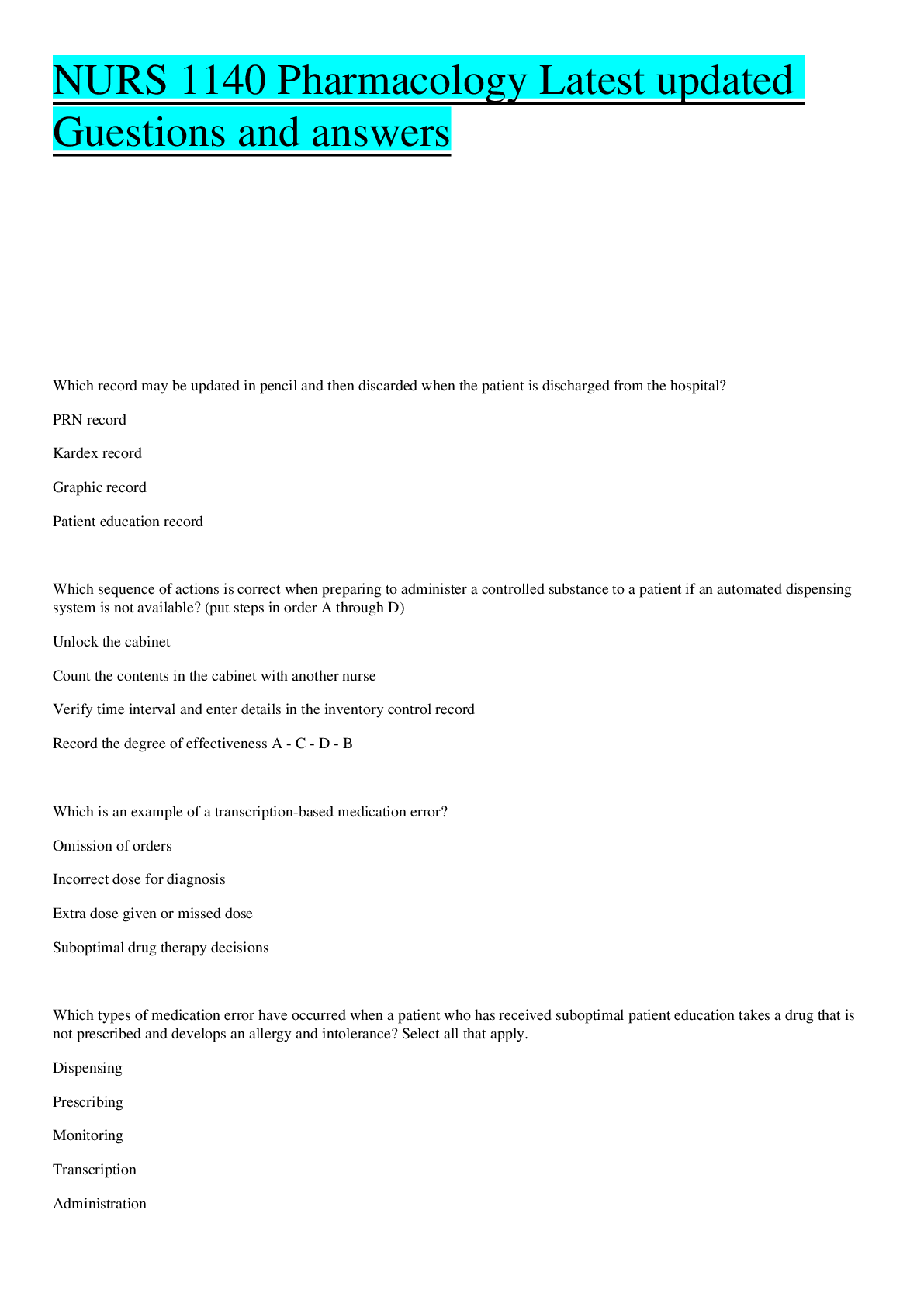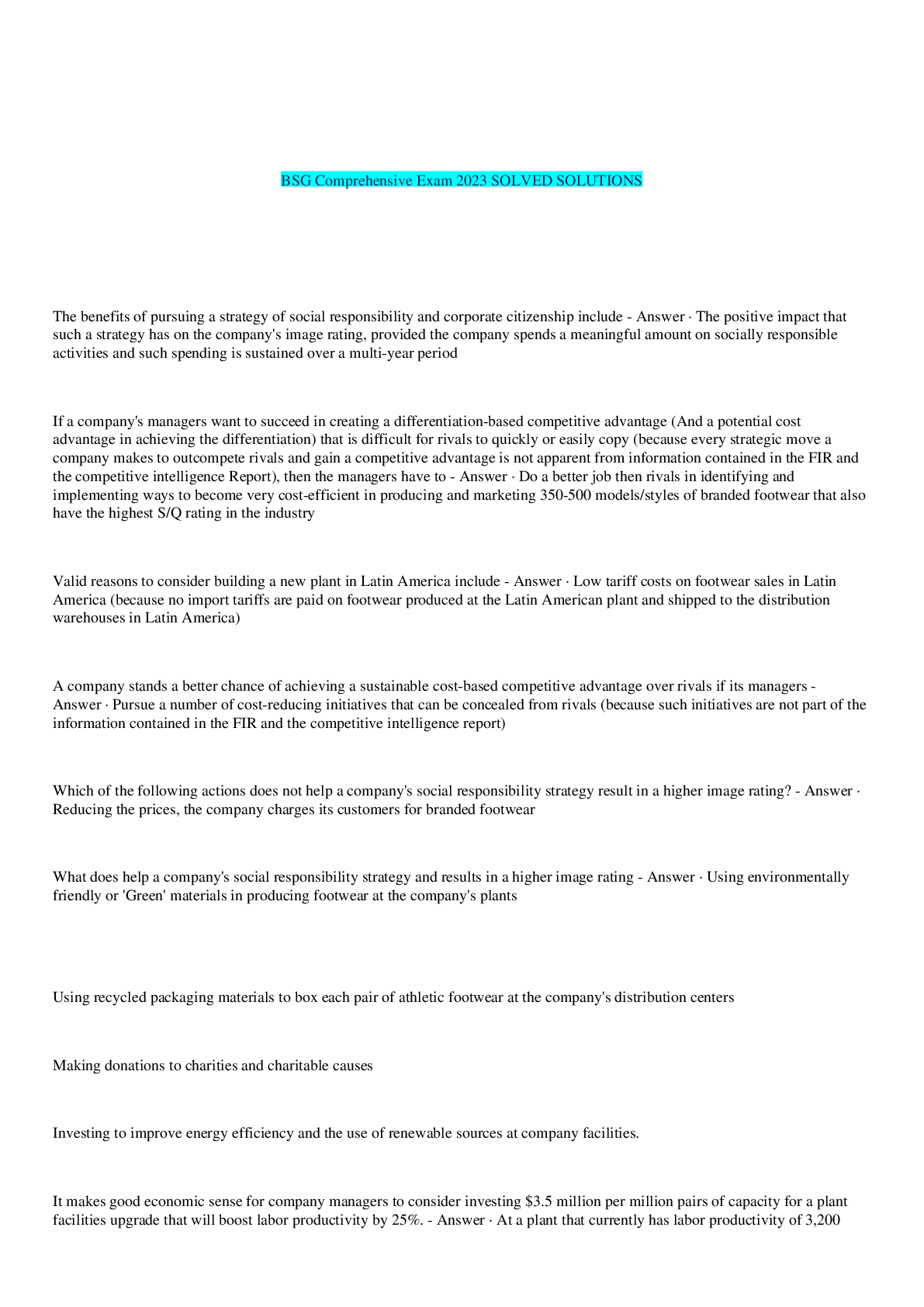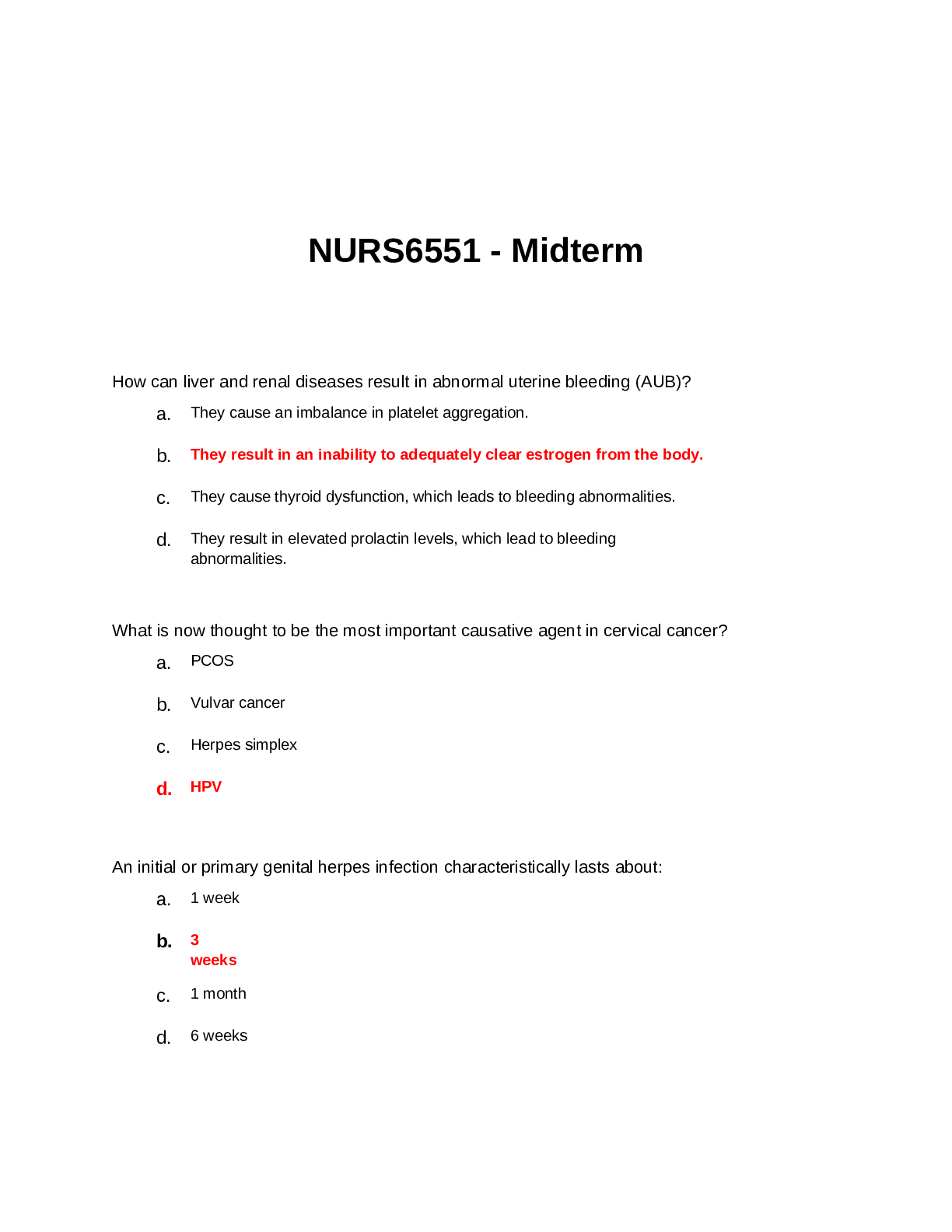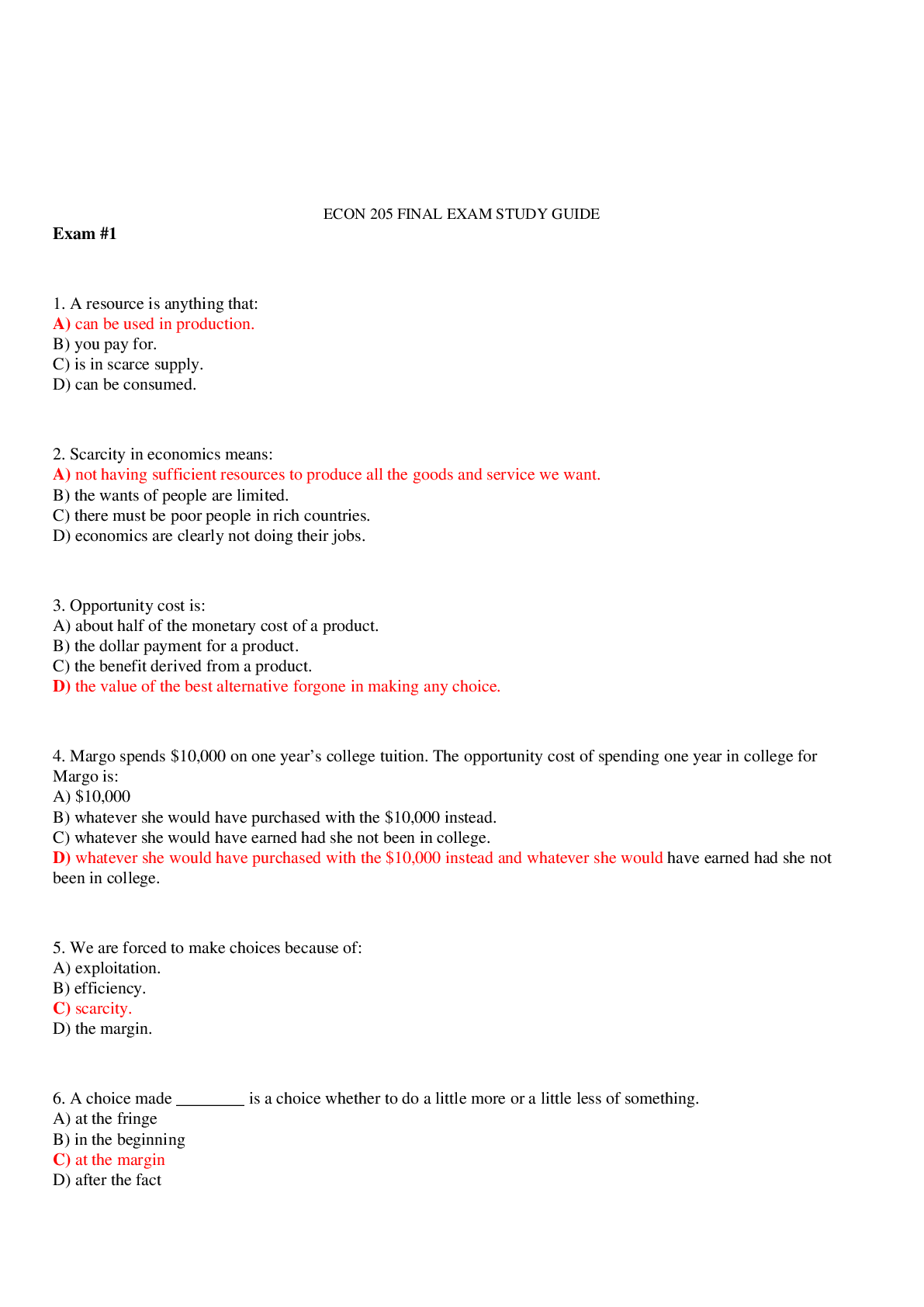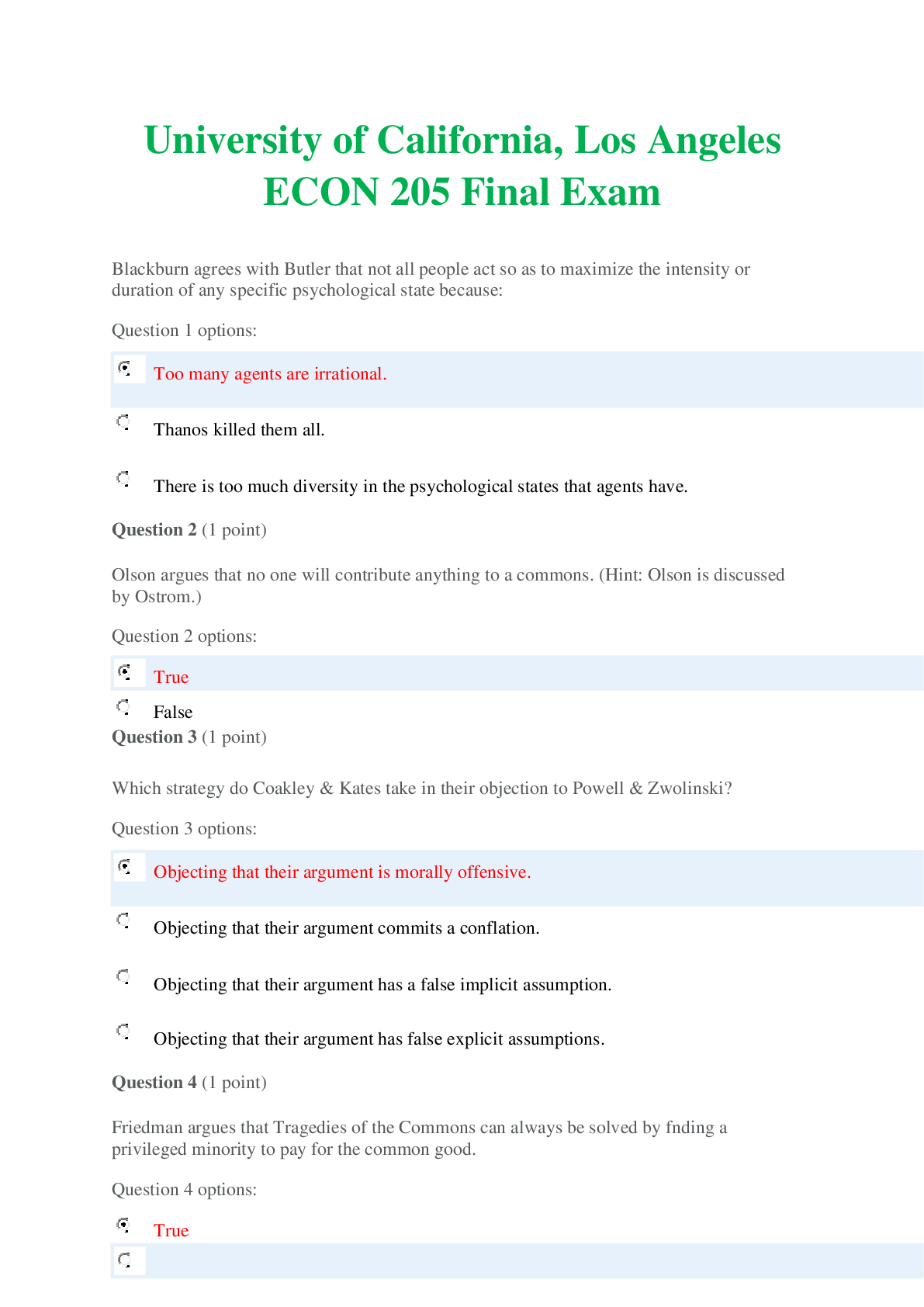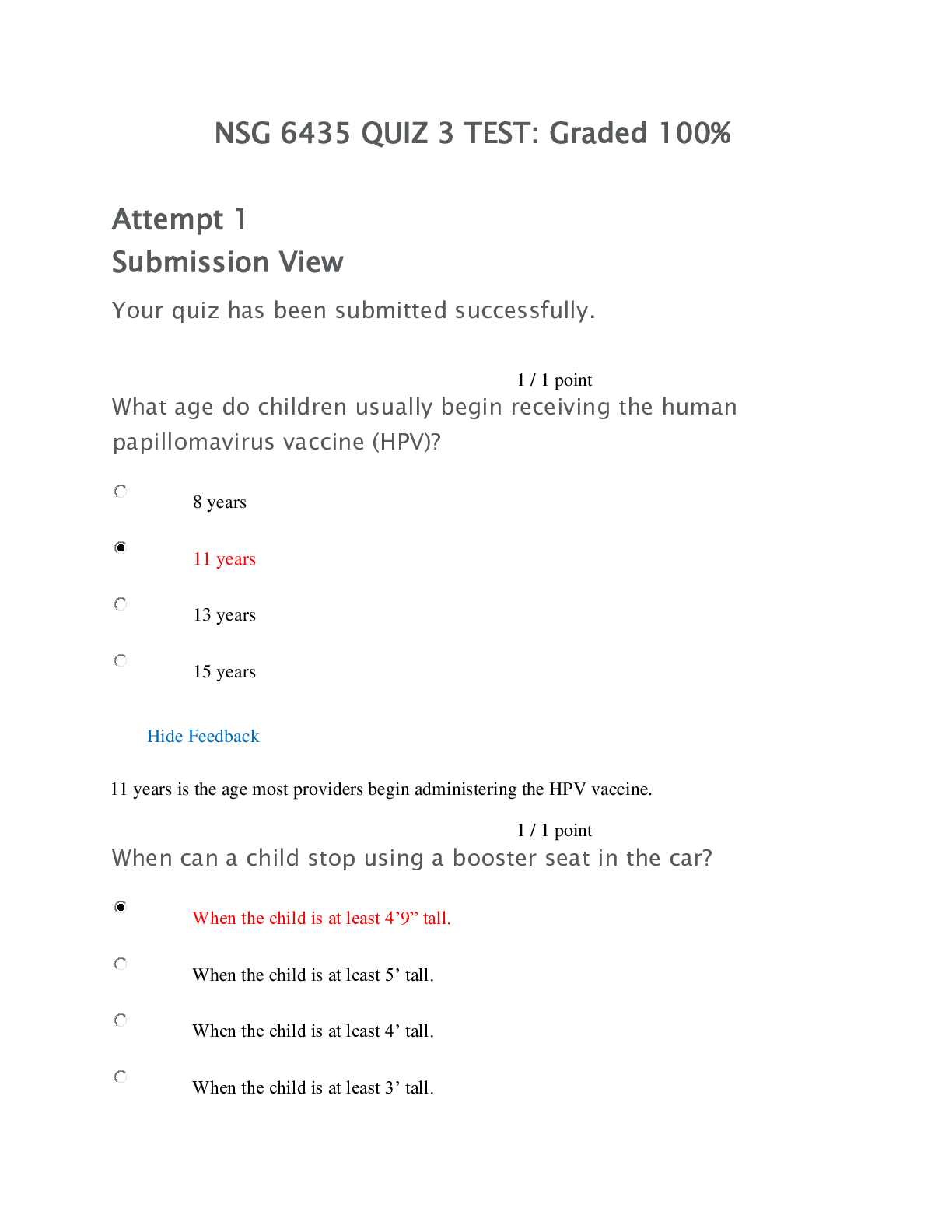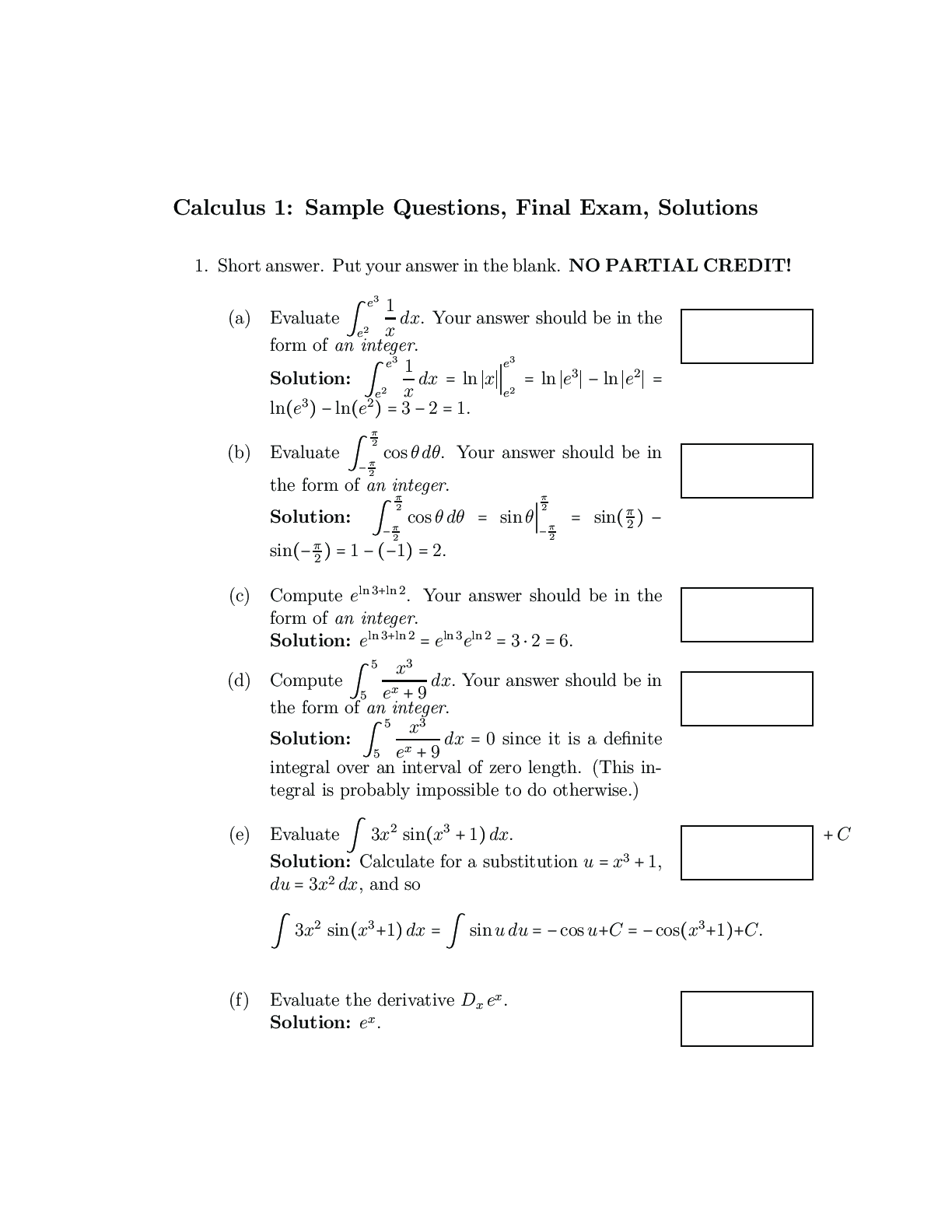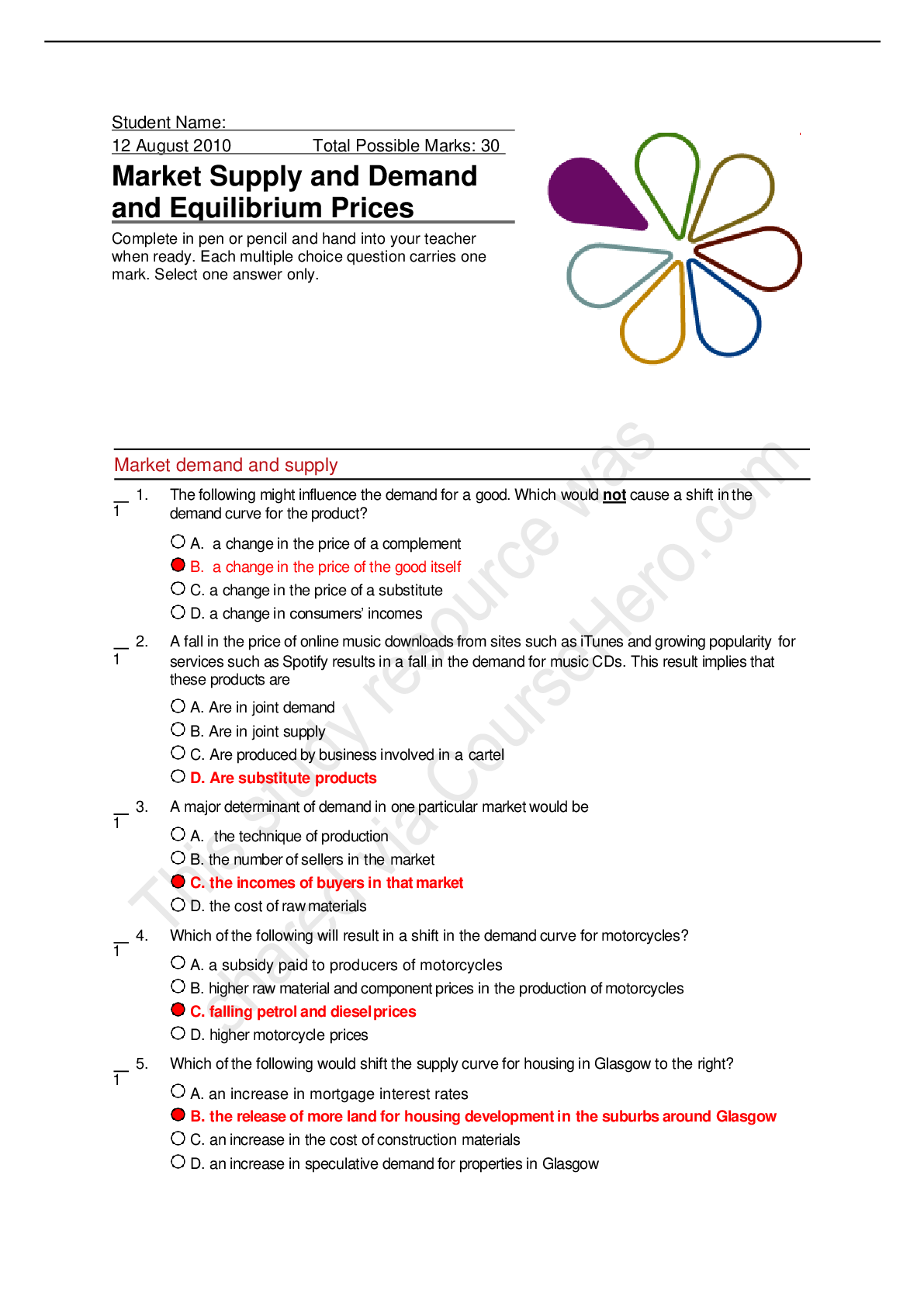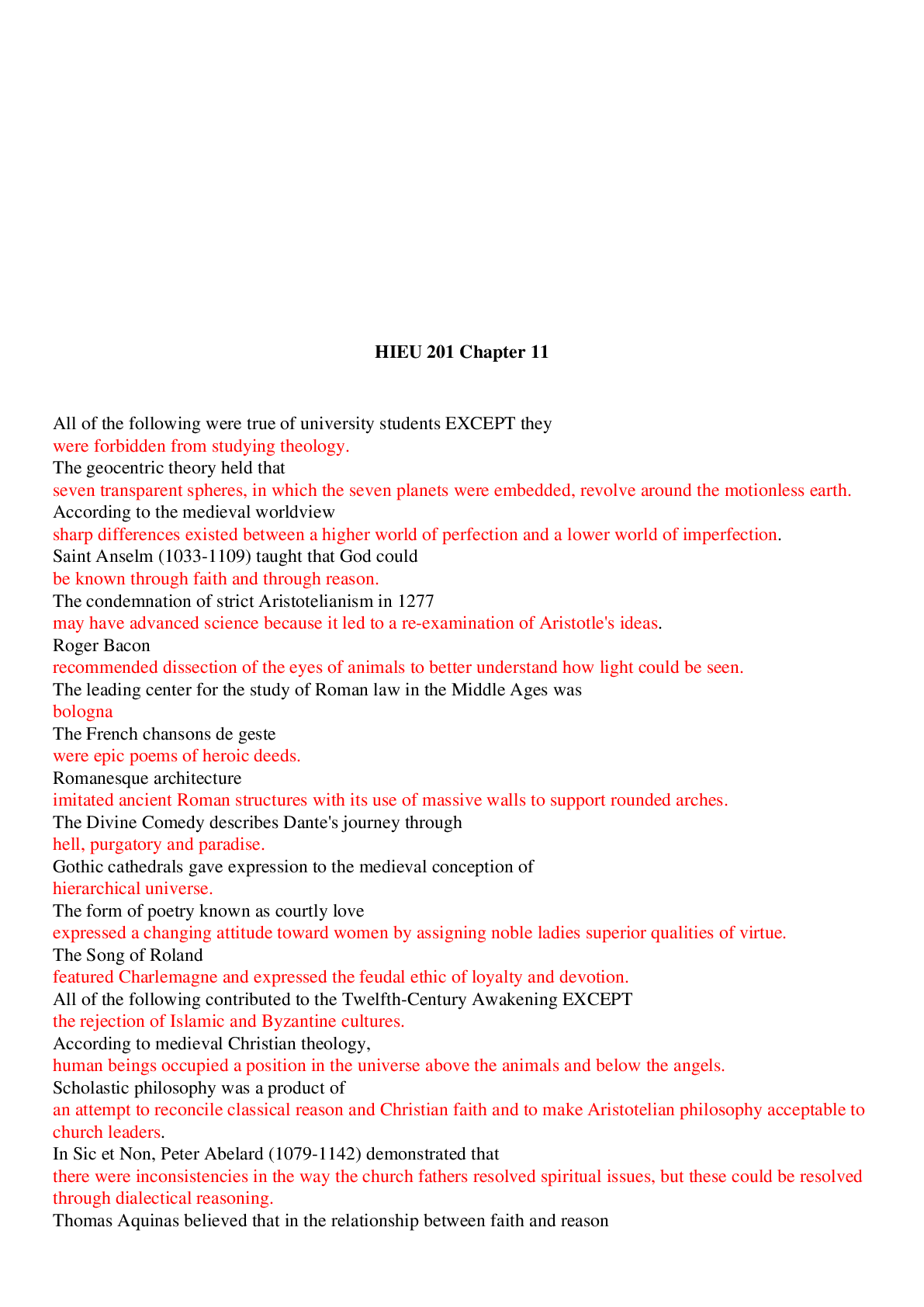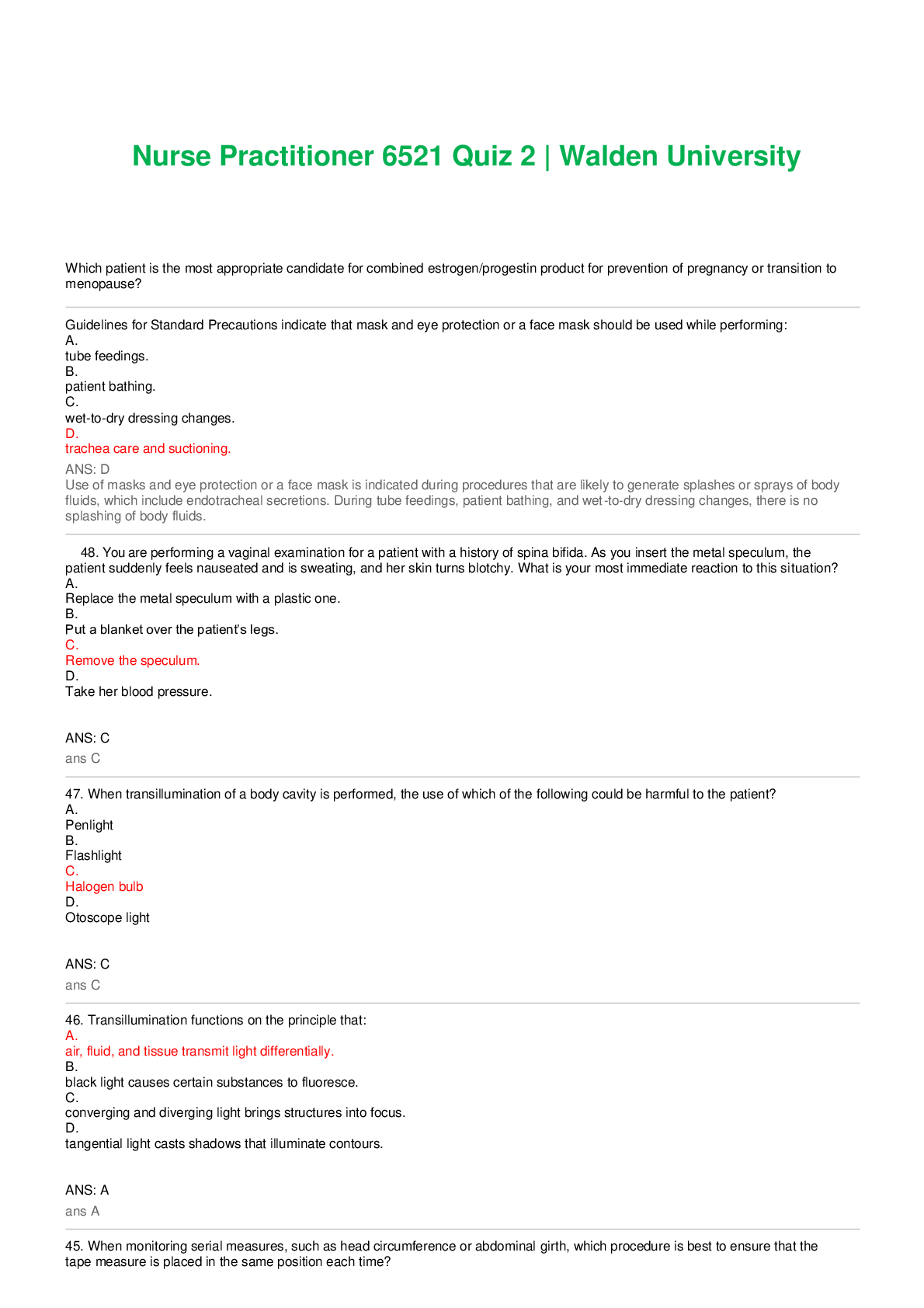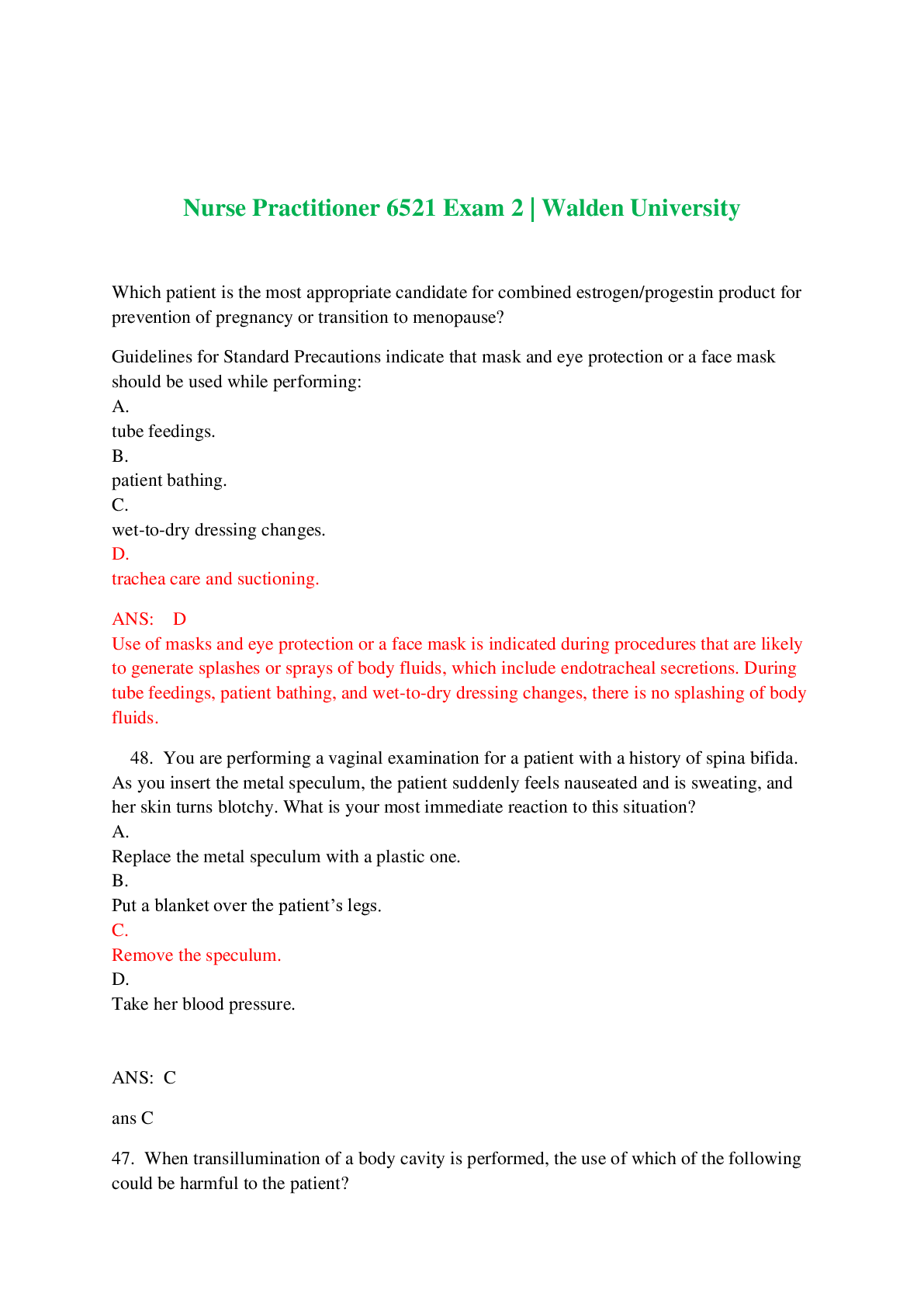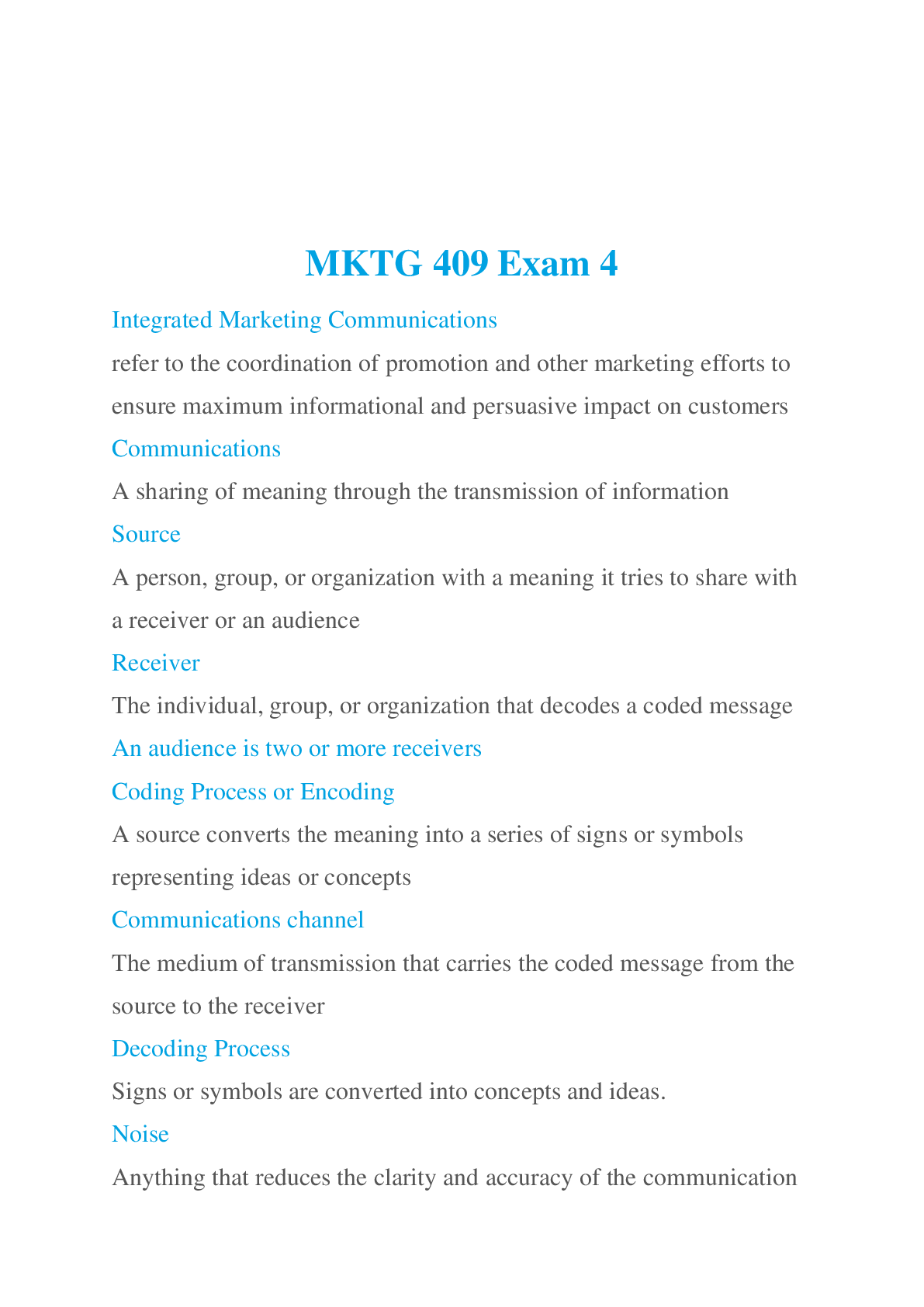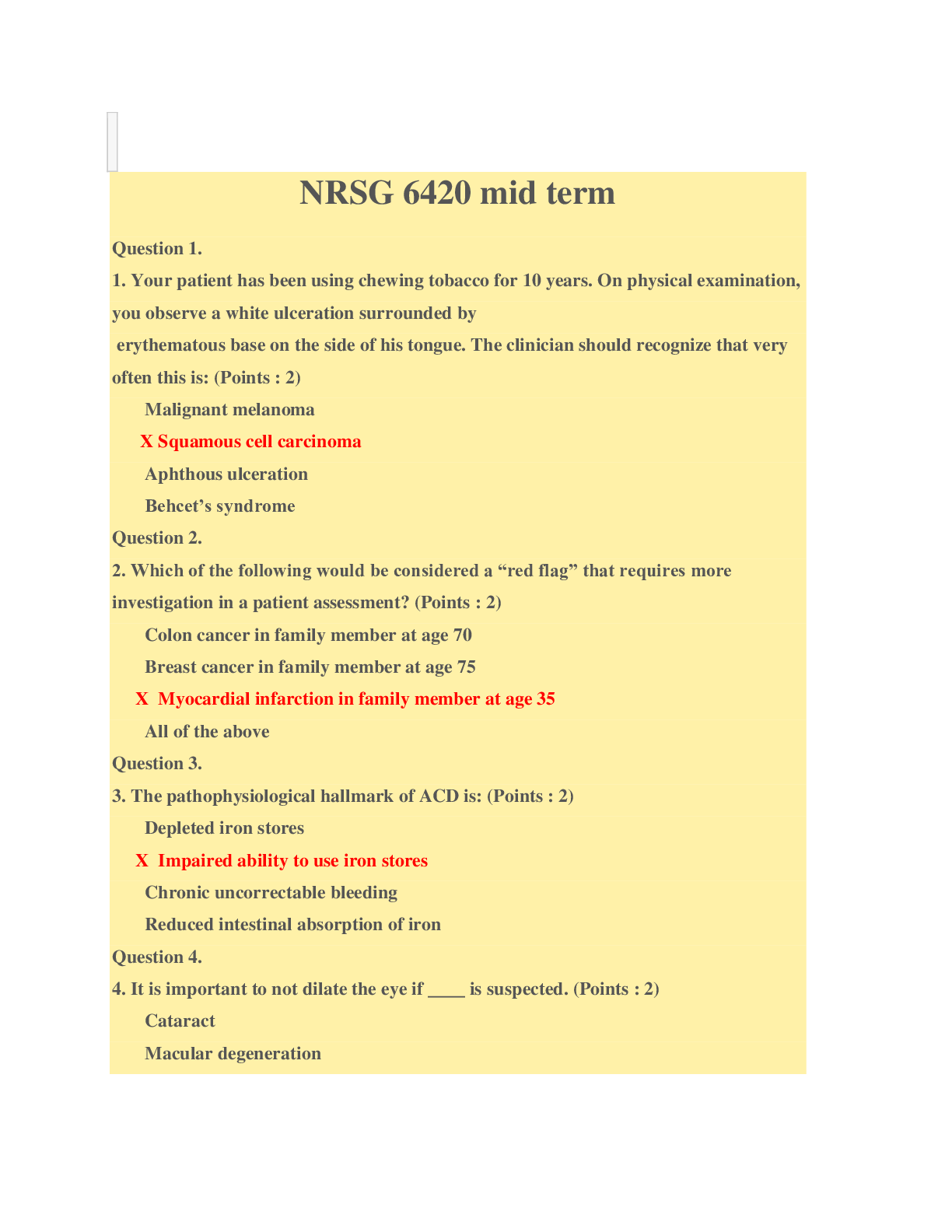NURS 209 EXAM (MIDTERM)
Document Content and Description Below
NURS 209 EXAM (MIDTERM) hypothermia - low body temp below 96 F hyperthermia - high body temp above 100.4 F hypoventilation - decreased rate or depth of air movement into the lungs ... hyperventilation - the condition of taking abnormally fast, deep breaths pyrexia - fever types of fever - intermittent remittent sustained/continuous relapsing/recurrent intermittent fever - temp returns to normal at least once every 24 hours remittent fever - temp does not return to normal & fluctuates a few degrees up and down sustained/continuous fever - temp remains above normal w minimal variations relapsing/recurrent fever - temp returns to normal for one or more days w one or more episodes of fever, as long as several days neurogenic fever - caused by disease or trauma to hypothalamus fever of unknown origin (FUO) - unknown cause bradypnea - SLOW breathing, less than 10 RPM tachypnea - rapid breathing, more than 24 RPM eupnea - normal respiration apnea - period w/o breathing dyspnea - difficult/labored breathing orthopnea - difficulting breathing in any position cheyne stokes - regular pattern, altern. hyperventilatio w apnea blood pressure - force exerted by blood against the arterial walls cardiac output - volume of blood pumped out of the heart in one min peripheral vascular resistance - opposition to blood flow due to friction generated as blood slides along vessel walls vasoconstriction - increases resistance to flow vasodilation - decreases resistance to flow hypertension (HTN) - blood pressure elevated above upper limits of normal hypotension - low blood pressure Process by which a drug is transferred from its site of entry in the body to the bloodstream is known as – absorption Synergistic effect - Synergistic interactions occur when the combined effect of two drugs is greater than the sum of each drug's individual activity Pathology - presence of disease Serum half-life - time it takes for 50% of drug to be eliminated Onset - time to produce a response Peak - time of highest concentration, when absorption is complete Trough - minimum concentration. drawn 30 mins before next dose Pharmacotherapeutics - the treatment of disease with medications Pharmacist - licensed to prepare, sell, and or dispense drugs Pharmacy - place where drugs/medications are prepared and dispensed Prescription - communication of medication plans to others Schedule 1 drugs - RESEARCH PURPOSES ONLY; high potential for abuse, not allowed to use medically Schedule 2 drugs - high potential for abuse, no telephone orders/refills, written prescription, labeling required Schedule 3-5 - lower abuse potential, rewritten every 6 mo, labeling required, written prescription Chemical name - the drug's chemical composition [Show More]
Last updated: 1 year ago
Preview 1 out of 9 pages
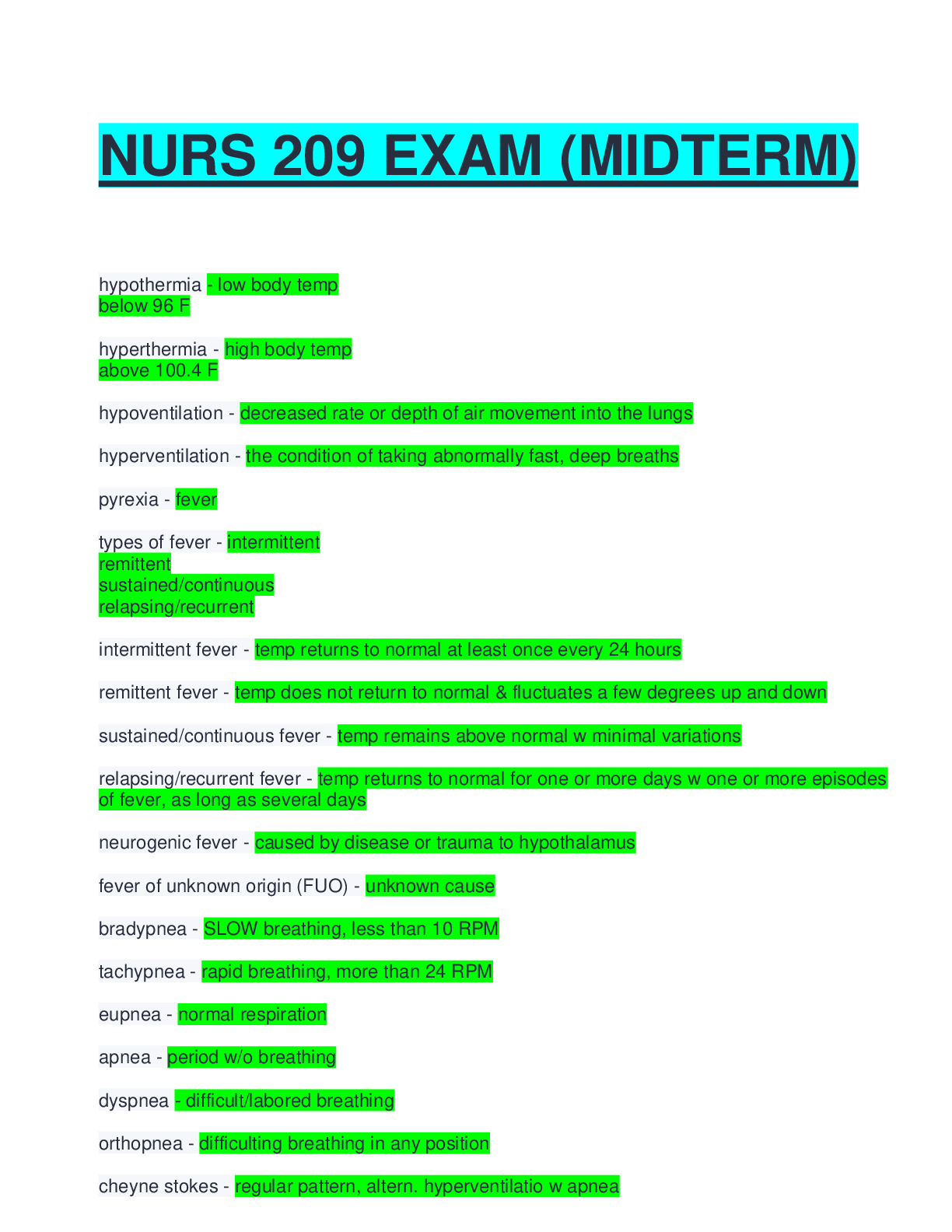
Buy this document to get the full access instantly
Instant Download Access after purchase
Buy NowInstant download
We Accept:

Reviews( 0 )
$7.50
Can't find what you want? Try our AI powered Search
Document information
Connected school, study & course
About the document
Uploaded On
Mar 14, 2024
Number of pages
9
Written in
Additional information
This document has been written for:
Uploaded
Mar 14, 2024
Downloads
0
Views
22




